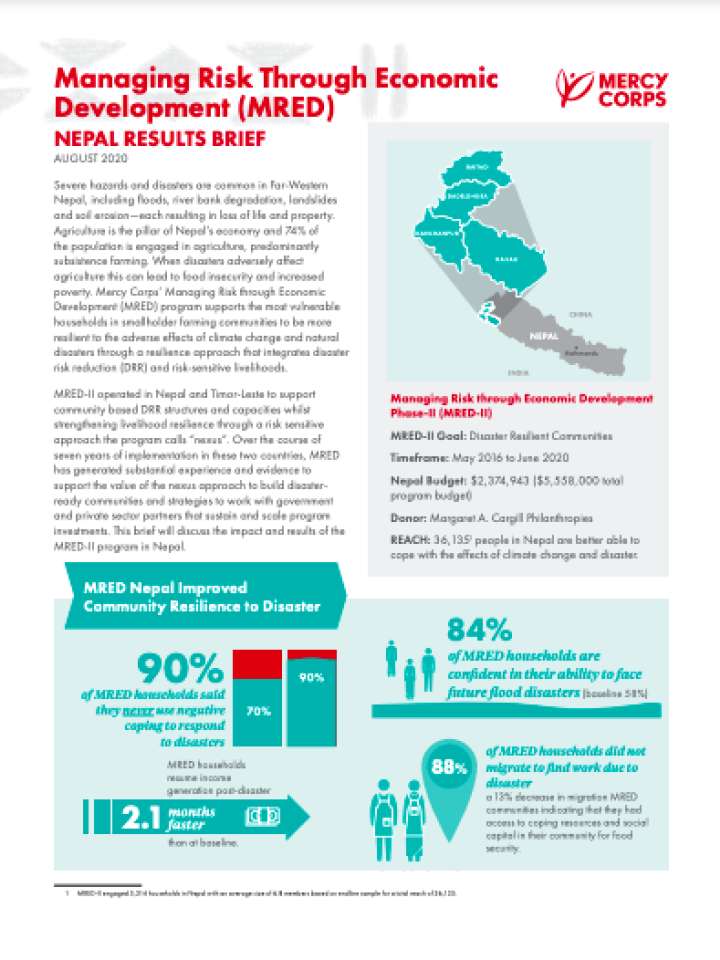Managing risk through economic development (MRED): Nepal results brief
This brief will discuss the impact and results of the MRED-II program in Nepal.
- MRED communities are better prepared for disaster. Households who said they were ‘completely’ confident in their ability to cope with floods rose 25 percentage points (16% at baseline to 41% at endline).
- MRED households improved livelihood recovery times for all types of disasters. Households recover income impacted by landslides 3.2 months quicker and from floods 2.2 months faster than at baseline (see chart).
- Use of risky behaviors declined across all caste groups according to the Coping Strategies Index (CSI). Reinforcing this finding, MRED households reported lower rates of reliance on negative food coping strategies after the 2017 flooding events, an average CSI of 3.35 points lower than nonMRED households. A reduction in CSI indicates that families are better able to positively cope in times of food insecurity.
MRED has also helped communities build confidence in their ability to respond to and recover from disasters.
- 84% of MRED households are confident they can cope with future disasters (a 100% improvement from program baseline).
- 178,336 people have increased access to more effective flood Early Warning Systems
For more results, please consult the results brief.
MRED-II operated in Nepal and Timor-Leste to support community based DRR structures and capacities whilst strengthening livelihood resilience through a risk sensitive approach the program calls “nexus”. Over the course of seven years of implementation in these two countries, MRED has generated substantial experience and evidence to support the value of the nexus approach to build disasterready communities and strategies to work with government and private sector partners that sustain and scale program investments.
Explore further
